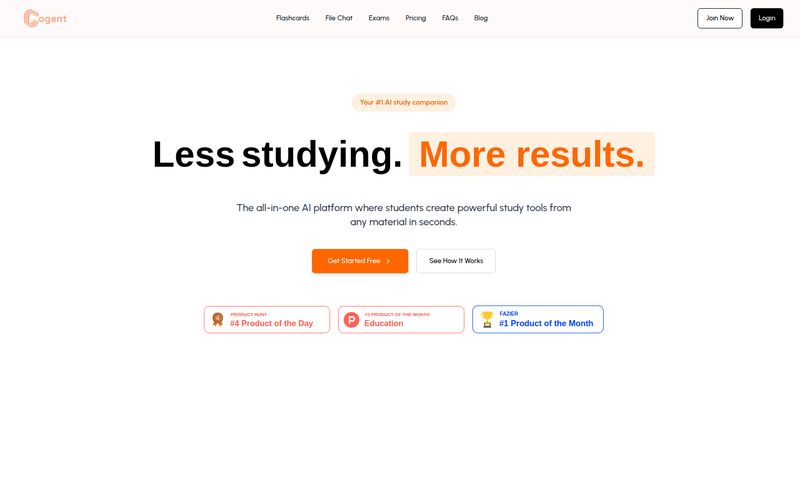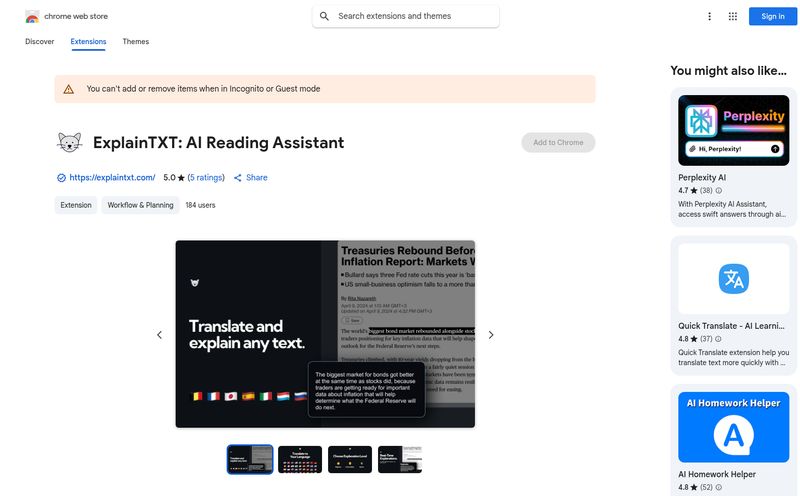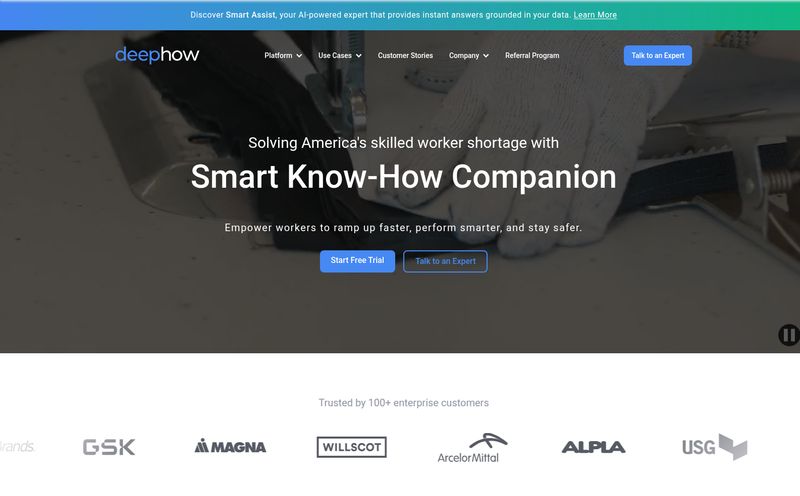For years, the process of academic research has been… a slog. I can still feel the phantom pain from my university days—drowning in a sea of PDF tabs, battling with cryptic journal paywalls, and trying to wrestle coherent insights from keyword searches that felt more like shouting into a void. You search for "mitochondrial function," and you get a million papers, half of which are completely irrelevant. It's a grind.
Then along came AI, promising to change everything. And lately, a new wave of specialized tools has started to pop up, each one claiming to be the definitive 'research assistant.' I've seen a lot of them. Some are clever, some are clunky, and most are just a slightly fancier search bar. So when I heard about PaperLens, I was intrigued but, you know, professionally skeptical. Another AI tool? Sure. But this one seemed a bit different. So, I decided to take it for a spin.
What Exactly Is PaperLens?
At its core, PaperLens is an AI-powered platform designed to help you navigate the ridiculously dense world of scientific literature. It hooks into massive databases like arXiv, PubMed Central, and others, giving you a single interface to search millions of peer-reviewed papers. But the real hook isn't just the search. It’s the way you search.
Instead of just feeding it keywords, you can ask it questions in plain English. Stuff like, "Does intermittent fasting actually increase longevity?" or "What's the latest on using virtual reality for phobia treatment?" It then goes out, finds the relevant research, and helps you make sense of it. The idea is to cut down the time you spend finding information so you can spend more time understanding it.
Diving Into the Core Features
A tool is only as good as its features, right? So let’s break down what PaperLens is actually working with.
The Magic of RAG-Powered Search
Okay, let's get a little nerdy for a second. PaperLens uses something called RAG (Retrieval-Augmented Generation). This isn't your standard keyword search. A standard search is like a librarian who only knows book titles; you say "dogs," they point you to every book with "dog" in the title. RAG is like a librarian who has read every book. You ask, "I'm looking for information on canine behavioral training for city living," and they understand the concept and find you the right resources, even if they don't use those exact words.
In practice, this means the semantic search is scarily accurate. It gets the context. It’s the difference between finding papers that just mention your terms and finding papers that actually answer your question. Honestly, it feels less like a search engine and more like a conversation.

Visit PaperLens
Chatting with Your Research Assistant
This is where things get really interesting. Once you find a paper, you're not left alone to decipher its dense, jargon-filled text. PaperLens has an AI chatbot you can interact with. You can ask it to summarize the abstract, explain the methodology in simpler terms, or even ask, "What were the key limitations of this study?"
For me, this is the biggest time-saver. It allows you to quickly vet a paper's relevance before committing to a full read-through. It’s like having a brilliant colleague you can bounce ideas off of, except this one is available 24/7 and never gets tired of your questions. A huge win.
Keeping Your Sanity with Smart Filtering and Saved Papers
We've all been there. 27 browser tabs open, trying to cross-reference three different papers while a fourth one loads. It's chaos. PaperLens brings some much-needed order to this madness. You can easily save papers you're interested in to a personal library for later access. No more lost links or forgotten titles.
The smart filtering is also a nice touch. You can narrow down results by publication date, relevance score, and other criteria to quickly hone in on what you're looking for. It's a simple feature, but one of those quality-of-life improvements that just makes the whole process feel smoother, less frantic. It’s about working smarter not harder.
The All-Important Question of Pricing
Alright, let's talk money. No tool is perfect if it breaks the bank. PaperLens has a pretty straightforward pricing structure, which I appreciate. No hidden fees or confusing credit systems.
| Plan | Price | Best For | Key Features |
|---|---|---|---|
| Starter | $8/month (yearly) or $15/month (monthly) | Individual Researchers & Students | Research Assistant, Chat with AI, Save Papers, 500 searches/month, Semantic & Keyword Search |
| Pro | $20/month (yearly) or $50/month (monthly) | Power Users & Teams | All Starter features, UNLIMITED searches, Early access, Custom features, Priority support |
In my opinion, the Starter plan is the sweet spot for most people. For less than a couple of fancy coffees a month (especially on the yearly plan), you get access to all the core functionality. The 500 searches-per-month limit sounds a little restrictive, but for focused projects or semester-long research, it’s likely more than enough. The Pro plan is clearly aimed at research teams, labs, or full-time academics who are constantly doing literature reviews. The unlimited searches and priority support are the big draws there.
The Good, The Bad, and The Nitty-Gritty
So after playing around with it, what's the verdict? I'm genuinely impressed. The RAG-powered search is the real deal and works better than many other AI search tools I've tried. The interface is clean—really clean—and intuitive. You dont need a manual to get started. The Research Assistant chatbot is the standout feature, turning a passive reading experience into an active dialogue with the material. It dramatically speeds up the process of figuring out if a paper is worth your time.
However, it's not perfect. The search limit on the Starter plan, while understandable from a business perspective, will be a hard stop for some heavy-duty researchers, pushing them towards the more expensive Pro tier. And while the AI summaries are excellent, you still have to be a critical thinker. It's an assistant, not a replacement for your brain. You should always treat its output as a highly-educated starting point, not the final word. Always go back to the source.
Who Is PaperLens Really For?
I can see a few groups getting a massive benefit from this. Students, both undergraduate and graduate, will find this invaluable for writing papers and literature reviews. It just cuts through so much noise. Academics and professional researchers can use it to stay on top of new developments in their field without spending days sifting through databases. I also think it’s a fantastic tool for journalists and content creators who need to quickly find and verify scientific claims with primary sources.
Frankly, anyone with a deep curiosity and a desire to look past the headlines will find something to like here. It makes dense scientific knowledge far more accessible.
Frequently Asked Questions about PaperLens
I've gotten a few questions, so here are some quick answers.
Is PaperLens better than Google Scholar?
They're different tools for different jobs. Google Scholar is a vast, powerful index for finding papers if you already know what you're looking for. PaperLens is an interpretive and exploratory tool. It's for when you have a question and need help not just finding papers, but understanding them.
What is RAG and why does it matter?
RAG stands for Retrieval-Augmented Generation. In simple terms, it means the AI first retrieves relevant, factual information from its database of papers and then uses that information to generate its answer. This makes it far less likely to invent facts (a problem known as 'hallucination') compared to general-purpose chatbots.
Can I trust the AI summaries?
You can trust them as a high-quality starting point. They are incredibly accurate for getting the gist of a paper. But for critical academic work, you should always use the summary to guide your own reading of the original paper. Think of it as an expert assistant, not a substitute for your own analysis.
What databases does PaperLens search?
According to their site, it searches millions of peer-reviewed papers from major sources, including arXiv and PubMed Central, among other leading academic databases. This gives it a wide breadth across many scientific disciplines.
Is there a free trial?
The pricing page doesn't list a specific free trial. However, the monthly Starter plan at $15 is a low-commitment way to try out the full feature set for a month to see if it fits your workflow before committing to a cheaper annual plan.
Final Thoughts on This AI Research Tool
So, is PaperLens the AI research sidekick we've been waiting for? For a lot of us, I think the answer is yes. It's a thoughtfully designed tool that addresses some of the most tedious and time-consuming parts of research. It's not going to do the thinking for you—and it shouldn't. What it does is act as a powerful force multiplier.
It clears away the underbrush of finding and parsing information, letting you focus on what actually matters: connecting ideas, building arguments, and discovering something new. It’s like upgrading from a shovel to a mini-excavator. You're still the one in control, but you can move a whole lot more earth, a whole lot faster. In a world saturated with information, a tool that helps you find knowledge isn't just useful; it's essential.



